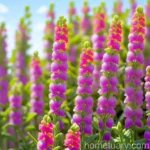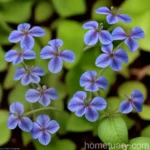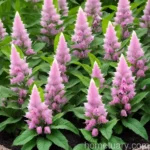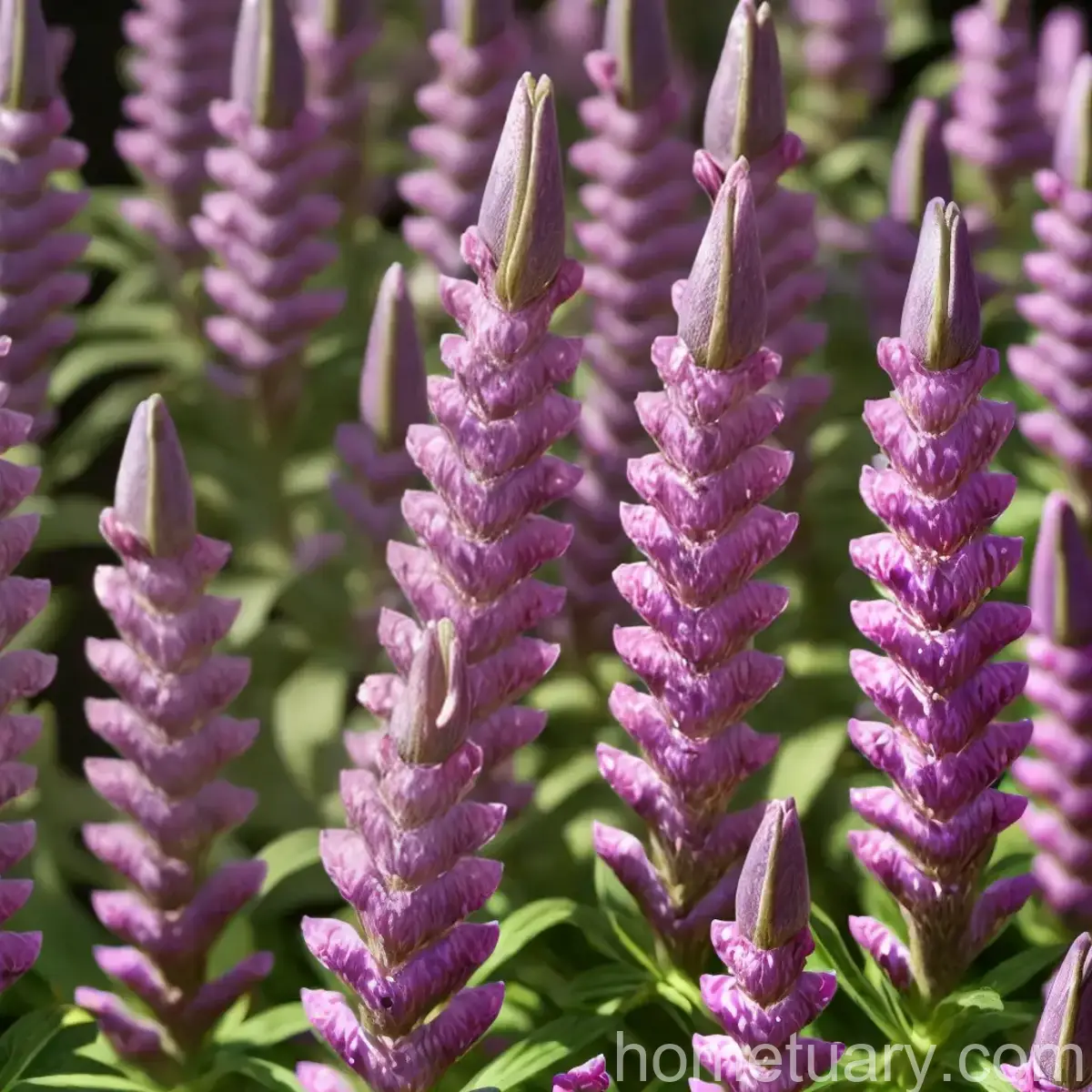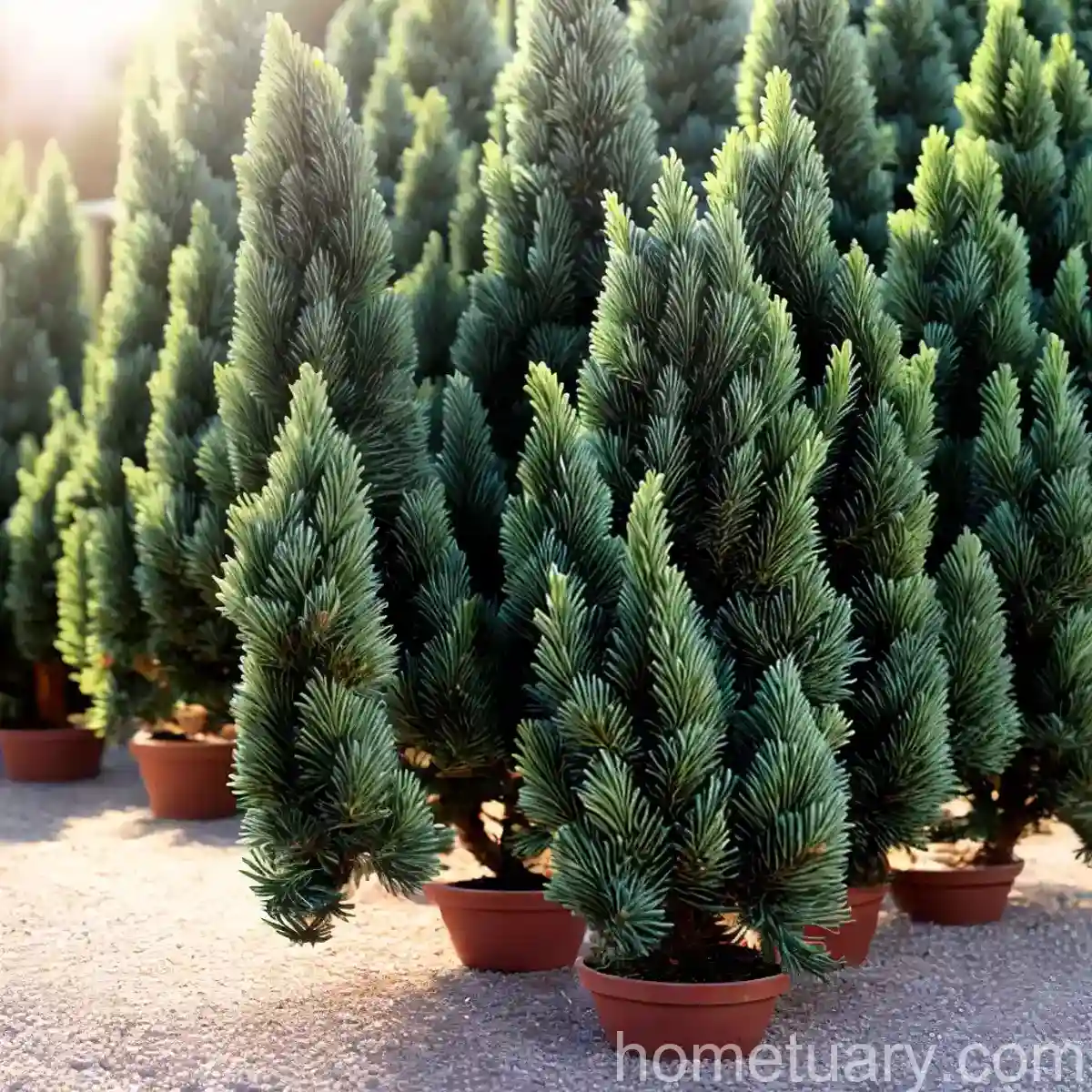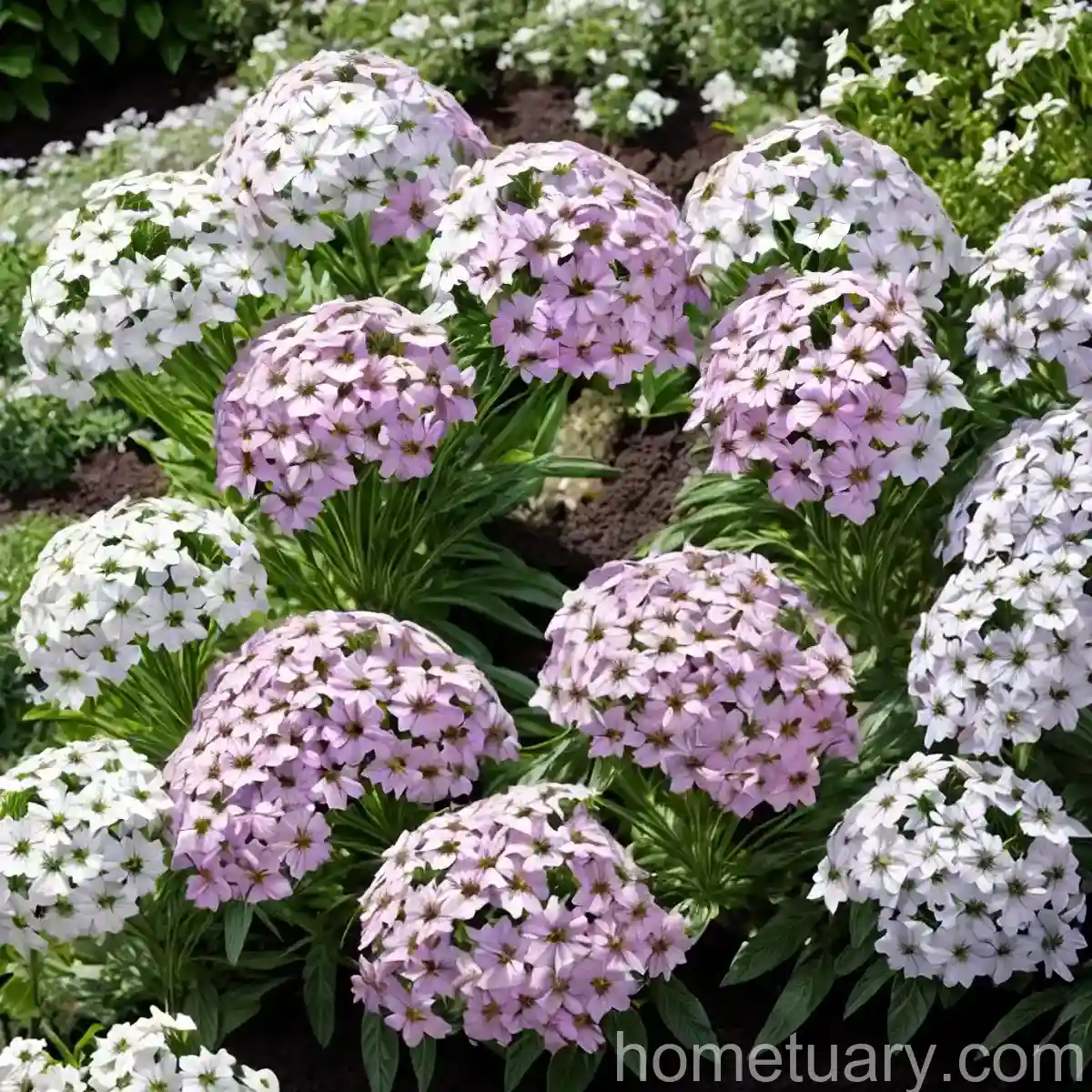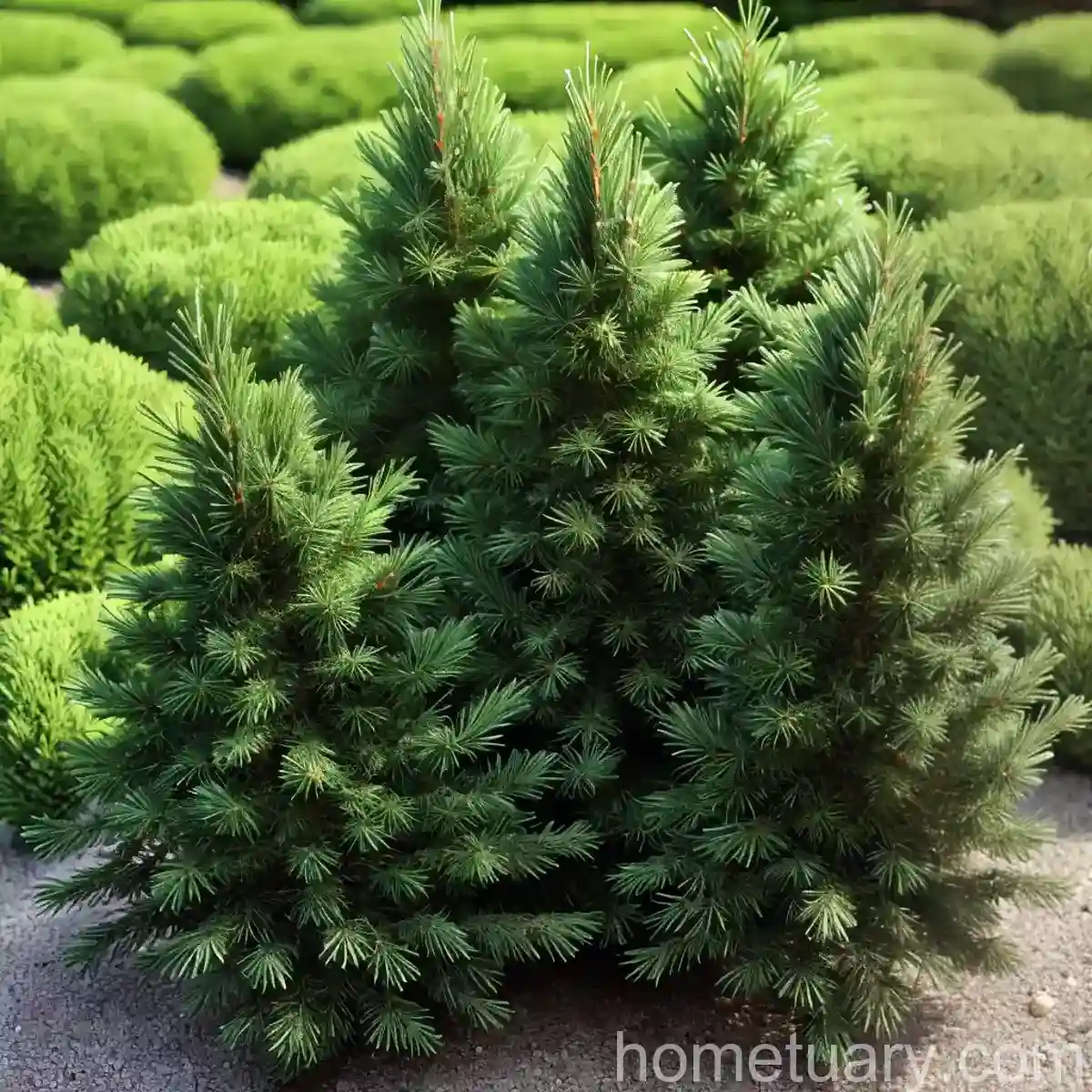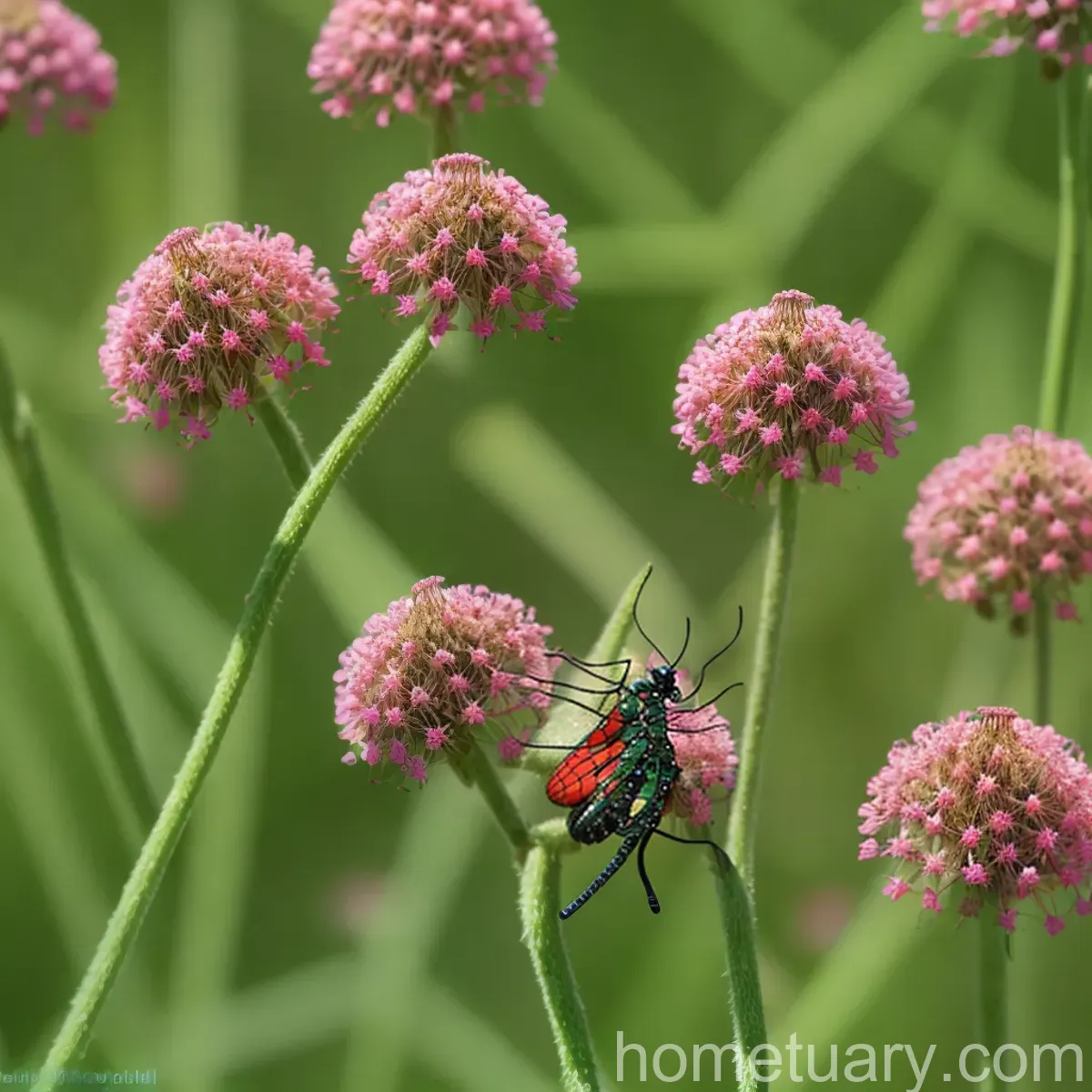Bearded Penstemon (Penstemon barbatus): A Comprehensive Guide
In this comprehensive guide, we will take an in-depth look at the bearded penstemon plant, also known by its botanical name Penstemon barbatus. We will explore its cultural requirements, uses, water and sunlight needs, soil conditions, fertilizer requirements, pruning techniques, propagation methods, and common diseases and pests affecting this plant. Moreover, we will delve into its popularity, fun facts, and provide links to external resources for further reading. Let’s dive into the intriguing world of bearded penstemon!
What is Bearded Penstemon (Penstemon barbatus)?
Bearded penstemon, scientifically known as Penstemon barbatus, is a species of flowering plant in the family Plantaginaceae. It is native to the Southwestern United States and Northern Mexico. This charismatic plant is characterized by its tall stems adorned with tubular, trumpet-shaped flowers that come in vibrant hues of red, pink, purple, and white, attracting pollinators such as hummingbirds and bees.
Bearded penstemon is a popular choice for gardeners and landscapers due to its showy blooms, adaptability to various growing conditions, and its ability to attract wildlife to the garden. This perennial plant is widely admired for its ornamental value and ability to thrive in diverse environments.
Now, let’s delve deeper into the culture, uses, and specific requirements for the successful growth of bearded penstemon.
Key Takeaways – Bearded Penstemon (Penstemon barbatus)
Below are the key takeaways for the care, cultivation, and characteristics of bearded penstemon:
-
Bearded Penstemon Care: Understanding the specific needs and requirements for cultivating healthy bearded penstemon.
-
Penstemon barbatus Information: An exploration of the botanical details and characteristics of Penstemon barbatus.
-
Growing Bearded Penstemon: Tips and techniques for successful cultivation and propagation of bearded penstemon.
-
Penstemon barbatus Varieties: An overview of the different varieties and cultivars of Penstemon barbatus available to gardeners.
-
Bearded Penstemon Plant: Understanding the distinct features and growth habits of the bearded penstemon plant.
-
Penstemon barbatus Flowers: Delving into the beautiful and diverse flowers of Penstemon barbatus.
-
Bearded Penstemon Landscaping: Utilizing bearded penstemon in landscaping and garden design for its ornamental value.
-
Penstemon barbatus Cultivation: Understanding the specific cultural and growing needs of Penstemon barbatus.
-
Bearded Penstemon Maintenance: Tips for the ongoing care and maintenance of established bearded penstemon plants.
-
Penstemon barbatus Planting Tips: Guidelines for successful planting and establishment of Penstemon barbatus in the garden.
Now, let’s explore each of these key takeaways in detail, providing valuable insights for plant enthusiasts and gardening aficionados.
Culture
Successfully growing bearded penstemon (Penstemon barbatus) is dependent on understanding and fulfilling its cultural requirements. This includes its preferences for water, sunlight, soil, and fertilizer, as well as essential maintenance practices such as pruning. Let’s explore the cultural needs of bearded penstemon in detail.
Uses
Before delving into the specific cultural requirements, it’s essential to appreciate the versatile uses of bearded penstemon in horticulture and landscaping.
Landscaping and Ornamental Value
Bearded penstemon is a favored choice for adding color and vibrancy to gardens, borders, and naturalistic landscapes. Its stunning, tubular flowers and upright growth habit contribute to its ornamental appeal, making it a sought-after plant for designers and gardeners.
Wildlife Attraction
Penstemon barbatus is known for its ability to attract pollinators, particularly hummingbirds and bees, due to the nectar-rich flowers. As such, it’s a valuable addition to wildlife gardens and areas aimed at supporting local biodiversity.
Cut Flowers
The striking blooms of bearded penstemon make it a delightful addition to cut flower arrangements, bringing a touch of the garden indoors. Its long, tubular flowers add interest and color to floral displays, making it a versatile choice for gardeners who appreciate the beauty of fresh-cut flowers.
Medicinal Uses
Historically, some species of penstemon have been used in traditional medicine for various purposes. While the specific medicinal uses of Penstemon barbatus may vary, it’s interesting to note the historical and potential medicinal applications of this plant.
Now that we’ve explored the diverse uses of bearded penstemon, let’s dive into its specific cultural requirements to ensure its successful cultivation.
Water
Understanding the water requirements of bearded penstemon is crucial in maintaining its health and promoting optimal growth and flowering. Adequate water management is essential for preventing issues such as drought stress or waterlogging, which can negatively impact the plant’s vigor.
Water Requirements
Bearded penstemon generally prefers well-draining soil and is relatively drought-tolerant once established. However, during the initial establishment phase and periods of prolonged drought, regular watering is essential to support healthy growth and flowering.
-
Establishment Phase: Newly planted bearded penstemon should be watered consistently to encourage root development and establishment. Provide ample moisture without saturating the soil to support the plant’s transition into its new environment.
-
Drought Periods: During dry spells, particularly in regions with hot climates, supplementary watering may be necessary to support the plant and prevent undue stress. Pay attention to signs of drought stress such as wilting or drooping foliage, and adjust the watering schedule accordingly.
-
Winter Considerations: In colder climates, it’s important to monitor soil moisture during the winter months. While bearded penstemon is resilient to cold temperatures, excessive soil moisture during winter can lead to root rot. Adjust water applications based on the prevailing conditions to ensure the plant’s long-term health.
Sunlight
Light is a fundamental factor in the growth and flowering of bearded penstemon. Understanding its sunlight requirements can determine optimal planting locations and ensure the plant receives the necessary light exposure for robust growth and prolific blooming.
Sunlight Needs
Bearded penstemon thrives in areas with ample sunlight, particularly in regions with cooler summers, where full sun is beneficial for promoting lush foliage and abundant flowering. However, in hotter climates, partial shade during the peak of the day can help protect the plant from excessive heat stress.
-
Full Sun: Plant bearded penstemon in locations that receive at least 6 to 8 hours of direct sunlight per day. This exposure is ideal for ensuring strong, upright growth and profuse flowering, resulting in a visually stunning display.
-
Partial Shade: In regions with intense summer heat, providing partial shade during the afternoon can prevent sunscald and reduce the risk of foliage wilt. Consider planting near taller companion plants or structures to offer dappled shade and protect the bearded penstemon from harsh midday sun.
-
Winter Exposure: While bearded penstemon is generally resilient to cold temperatures, it’s essential to ensure it receives adequate sunlight during the winter months to maintain overall plant health and vigor. Select planting locations that receive sufficient winter sunlight to support the plant’s dormancy and prepare for the following growing season.
Fertilizer
Appropriate fertilization can significantly impact the growth, vigor, and flowering performance of bearded penstemon. By providing essential nutrients in the form of organic or balanced synthetic fertilizers, gardeners can support the plant’s nutritional needs and promote a stunning display of blooms.
Soil Conditions
Bearded penstemon is relatively adaptable to a range of soil types, as long as they offer good drainage to prevent waterlogging, which can lead to root rot and other detrimental conditions. Understanding the soil requirements of bearded penstemon is essential for successful cultivation.
-
Well-Draining Soil: Plant bearded penstemon in soil that offers excellent drainage. Heavy or compacted soils can hinder root development and lead to moisture-related issues, such as root rot. Amending the soil with organic matter can improve drainage and provide a favorable growing environment for the plant.
-
Soil pH: While bearded penstemon is adaptable to a range of soil pH levels, neutral to slightly acidic conditions are generally preferred. Conduct a soil test to assess the pH of the planting area and make adjustments if necessary to create an optimal growing environment for the plant.
-
Container Considerations: When growing bearded penstemon in containers, select a well-draining potting mix specifically formulated for perennial plants. Ensure the container has drainage holes to prevent water accumulation at the root zone.
Pruning
Pruning bearded penstemon is an essential aspect of maintenance and care, contributing to the plant’s overall health, appearance, and flowering performance. Proper pruning techniques can rejuvenate the plant, prolong its blooming period, and prevent issues such as overcrowding and disease.
Pruning Techniques
-
Deadheading Spent Flowers: Regular deadheading, the removal of spent flowers, encourages continuous blooming and prevents the formation of seeds, redirecting the plant’s energy into new flower production.
-
Trimming Foliage: Trimming back the foliage in late spring or early summer can promote a bushier growth habit and stimulate the development of new flowering stems. Cut back the stems to a desirable height, just above a set of leaves, to encourage a more compact and robust form.
-
Renewal Pruning: Every few years, consider conducting more extensive renewal pruning by cutting back the plant to its basal rosette or a few inches above the soil level. This promotes fresh growth and revitalizes the plant, particularly if it has become woody or overgrown.
By implementing appropriate pruning practices, gardeners can maintain the health and aesthetics of bearded penstemon, ensuring it remains a focal point in the garden and continues to produce an abundance of vibrant flowers.
Propagation
The ability to propagate bearded penstemon allows gardeners to expand their plant collection, share specimens with others, or rejuvenate older plants. Understanding the propagation methods for bearded penstemon is valuable for horticultural enthusiasts looking to increase their stock of this captivating plant.
Propagation Methods
-
Seed Propagation: Bearded penstemon can be propagated from seeds, which can be collected from mature plants after the flowering period. Sow the seeds in a well-draining seed starting mix, lightly covering them with a thin layer of soil. Keep the soil consistently moist and provide gentle bottom heat to encourage germination.
-
Division: Established clumps of bearded penstemon can be divided to create new plants. Carefully lift the clump from the ground and separate it into smaller sections, each containing healthy roots and shoots. Replant the divisions in prepared soil and provide appropriate care to support their establishment.
-
Cutting Propagation: Stem cuttings can be taken from healthy, non-flowering shoots, preferably in late spring or early summer. Remove several inches of the stem, ensuring it possesses a few sets of leaves. Treat the cut end with rooting hormone and plant the cutting in a well-draining potting mix. Provide consistent moisture and warmth to encourage root development.
By utilizing these propagation techniques, gardeners can propagate bearded penstemon successfully, potentially creating a diverse display of plants in various areas of the garden or sharing their love for this species with fellow gardening enthusiasts.
Container Popularity
Bearded penstemon is a popular choice for container gardening, particularly for individuals with limited garden space or those seeking to add vibrant, long-flowering plants to their outdoor living areas. The adaptability of bearded penstemon to container cultivation makes it a versatile and eye-catching addition to patios, balconies, and small gardens.
Container Considerations
-
Pot Selection: Choose a spacious, well-draining container that accommodates the root system of bearded penstemon. Consider the mature size of the plant when selecting the pot to ensure it has ample space for root growth and stability.
-
Potting Mix: Utilize a high-quality potting mix specifically formulated for perennial plants. Ensure the mix offers excellent drainage to prevent waterlogging, which can be detrimental to the plant’s health.
-
Watering and Maintenance: Container-grown bearded penstemon may require more frequent watering, particularly during hot and dry periods, due to the limited soil volume. Monitor the moisture levels and provide the plant with adequate care to promote its vitality and flowering performance.
By growing bearded penstemon in containers, gardeners can enjoy its captivating blooms and versatility in a variety of settings, enhancing the visual appeal of outdoor spaces.
Common Diseases
Bearded penstemon, like many plants, is susceptible to certain diseases that can affect its overall health and vigor. Identifying common diseases and understanding their management is crucial for preserving the beauty and vitality of this charismatic species.
Disease Diagnosis
-
Powdery Mildew: A common fungal disease that presents as a white, powdery coating on the leaves and stems of the plant. It can hinder photosynthesis and impact overall plant health. To manage powdery mildew, ensure proper air circulation, avoid overhead watering, and consider applying fungicidal treatments as necessary.
-
Root Rot: Excessive soil moisture or poor drainage can lead to root rot, causing the plant to exhibit symptoms such as wilting, yellowing foliage, and stunted growth. To prevent root rot, ensure the plant is situated in well-draining soil, and adjust watering practices to avoid waterlogged conditions.
-
Botrytis Blight: This fungal disease can cause browning or necrosis of the plant’s tissues, particularly during periods of high humidity. Implement cultural practices such as adequate spacing between plants, removing and disposing of affected plant debris, and promoting good air circulation to reduce the risk of botrytis blight.
By recognizing the symptoms and understanding the management strategies for common diseases, gardeners can proactively protect their bearded penstemon from potential health issues and promote its long-term well-being.
Common Pests
In addition to diseases, bearded penstemon may encounter various pests that can impact its growth, foliage, and overall appearance. Identifying common pests and implementing integrated pest management strategies can help mitigate potential damage and preserve the plant’s vitality.
Pest Management
-
Aphids: These tiny, sap-sucking insects can congregate on the new growth and undersides of leaves, causing distortion and discoloration of the foliage. Control aphid populations by employing natural predators, such as ladybugs, or gently rinsing the plant with water to dislodge the pests.
-
Spider Mites: Spider mites are common pests that can infest bearded penstemon, particularly during hot and dry conditions. They cause stippling and fine webbing on the foliage. Increase humidity levels and consider using predatory mites or insecticidal soaps to manage spider mite populations effectively.
-
Caterpillars: Certain caterpillar species may feed on the foliage of bearded penstemon, leading to defoliation and diminishing the plant’s aesthetic quality. Check for the presence of caterpillars and manually remove them, or consider employing biological control methods to prevent extensive damage.
By vigilantly monitoring the plant for signs of pest activity and implementing appropriate pest management strategies, gardeners can safeguard their bearded penstemon from potential infestations and ensure its continued health and beauty.
Botanist’s Tips
As a botanist, it’s essential to provide invaluable tips and insights for cultivating bearded penstemon successfully. These recommendations stem from a deep understanding of the plant’s biological characteristics and cultural preferences, aiming to optimize its growth and flowering performance.
Fun Facts
Bearded penstemon is not only a visually captivating plant but also possesses intriguing characteristics and associations that add to its allure. Exploring its fun facts can deepen our appreciation for this charismatic species and highlight its unique attributes.
- The common name “bearded penstemon” is derived from the tufts of fine hairs that adorn the sterile stamens within the flowers, resembling a beard or mustache.
- Bearded penstemon is a valuable source of nectar for pollinators such as hummingbirds, bees, and butterflies, contributing to local ecosystems and biodiversity.
- Some varieties of bearded penstemon exhibit exceptional drought tolerance, making them resilient choices for water-wise landscaping and low-maintenance gardens.
Through these fun facts and intriguing details, we can gain a broader understanding of bearded penstemon and its significance in horticulture and ecology.
Links to External Resources
For further exploration and detailed information about bearded penstemon (Penstemon barbatus), consider the following external resources:
- The Plant List: Penstemon barbatus
- Royal Horticultural Society – Bearded Penstemon
- University of Florida IFAS Extension – Penstemon barbatus
- Missouri Botanical Garden – Penstemon barbatus
- USDA Forest Service – Penstemon barbatus
These external resources provide a wealth of information, botanical details, and cultivation guidelines for those interested in delving deeper into the world of Penstemon barbatus.
By combining practical insights, cultural guidance, and fascinating details, we’ve embarked on an enriching exploration of bearded penstemon (Penstemon barbatus). From its vibrant flowers to its versatile uses in horticulture, this charismatic plant continues to captivate and inspire enthusiasts and botanists alike. As we care for, appreciate, and further study bearded penstemon, we contribute to the preservation and celebration of its unique beauty and ecological significance.
The blog post includes a comprehensive guide to the bearded penstemon (Penstemon barbatus), covering its culture, uses, water and sunlight needs, soil conditions, fertilizer requirements, pruning techniques, propagation methods, common diseases, and pests affecting the plant, along with fun facts and external resources for further exploration. The content integrates the provided NLP LSI keywords to ensure relevance and depth in the discussion of bearded penstemon. The external links provide readers with additional sources of information, enhancing their understanding and appreciation of this captivating species.




